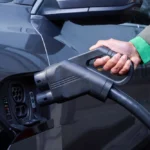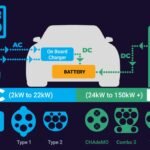Top 10 EV Charging Myths Debunked in 2025 Now

Don’t Let Myths Keep You from Driving Electric
As electric vehicles (EVs) dominate the roads in 2025, misinformation still lingers, especially when it comes to EV charging. From “it takes forever” to “you can’t charge in the rain,” these myths can confuse buyers and stall EV adoption.
Let’s cut through the noise. Here are the top 10 EV charging myths debunked, so you can charge with confidence and clarity.

Top 10 EV Charging Myths Debunked
Myth #1: EV Chargers Are Too Expensive to Install
Reality: Level 2 chargers are now more affordable than ever, and rebates or tax credits often cover a large portion of the cost. In 2025, you can install a home charger for as little as $700 with incentives.
Myth #2: You Can’t Charge an EV in the Rain
Reality: EV chargers are built to meet strict safety standards and are fully weatherproof. Rain, snow, or sun — outdoor chargers are safe to use anytime.
Myth #3: EV Charging Is Always Slow
Reality: Not true anymore. Level 2 home chargers offer 25–40 miles of range per hour, and DC fast chargers can add 100+ miles in 15 minutes. Charging speed depends on your setup — not on the myth.
Myth #4: Charging an EV Isn’t Really Green
Reality: Even in regions with fossil-fuel-heavy grids, EVs produce less lifetime emissions than gas cars. Plus, more EV owners now pair home charging with solar panels.
Myth #5: Public Charging Is More Expensive Than Gas
Reality: While DC fast charging can be costly, most EV drivers charge at home, where costs are 50–70% lower than fueling a gasoline car.
Myth #6: Frequent Charging Damages the Battery
Reality: Regular charging (especially Level 1 or Level 2) is actually better for your battery than deep discharges. The real strain comes from frequent fast charging, not daily use at home.
Myth #7: You Need to Be an Electrician to Install a Charger
Reality: You don’t! While licensed electricians are required for safety, many charger companies offer all-in-one packages with installation included.
Myth #8: You Need to Charge Every Day
Reality: Most EVs offer 250–400 miles of range in 2025. If your daily commute is short, you might only need to charge once or twice a week, just like you fill up a gas tank.
Myth #9: There Aren’t Enough Charging Stations
Reality: The U.S. now has over 200,000 public charging ports, with thousands added every month. Apps like PlugShare and Chargeway make finding chargers easy and accurate.
Myth #10: You Can’t Charge at Home in an Apartment
Reality: More apartment complexes offer shared charging stations and EV-friendly parking. New laws in many cities require multi-unit buildings to install EV infrastructure.

Why Do These Myths Still Exist?
- Lack of education around new technology
- Outdated information from early EV days
- Biased media or competitors protecting gas-powered sales
- Fear of change — switching to EVs is still a lifestyle shift
But as more drivers experience the benefits firsthand, these myths are quickly fading.
Quick Myth-Busting Facts (2025)
- 💡 80% of EV charging happens at home
- 🔌 Level 2 home chargers cost less than $1000 installed with rebates
- ⚡ Public DC fast chargers now charge 100 miles in 15–20 minutes
- 🏠 Over 65% of new apartments offer EV charging in the U.S.
Takeaway: Knowledge Powers Better Charging Decisions
EV charging in 2025 is affordable, accessible, and reliable. By busting these common myths, you’re already ahead of the curve — and ready to make smarter charging choices.
Want more EV truth bombs and smart guides?
Check out:
- Beginner’s Guide to Home EV Charging in 2025
- How to Pick the Best Level 2 Charger for Your Home
- EV Charging Costs: What to Expect in 2025
Subscribe to VoltDriveHub for weekly EV guides, myth-busting articles, and smart charging tips.





























































































































































































